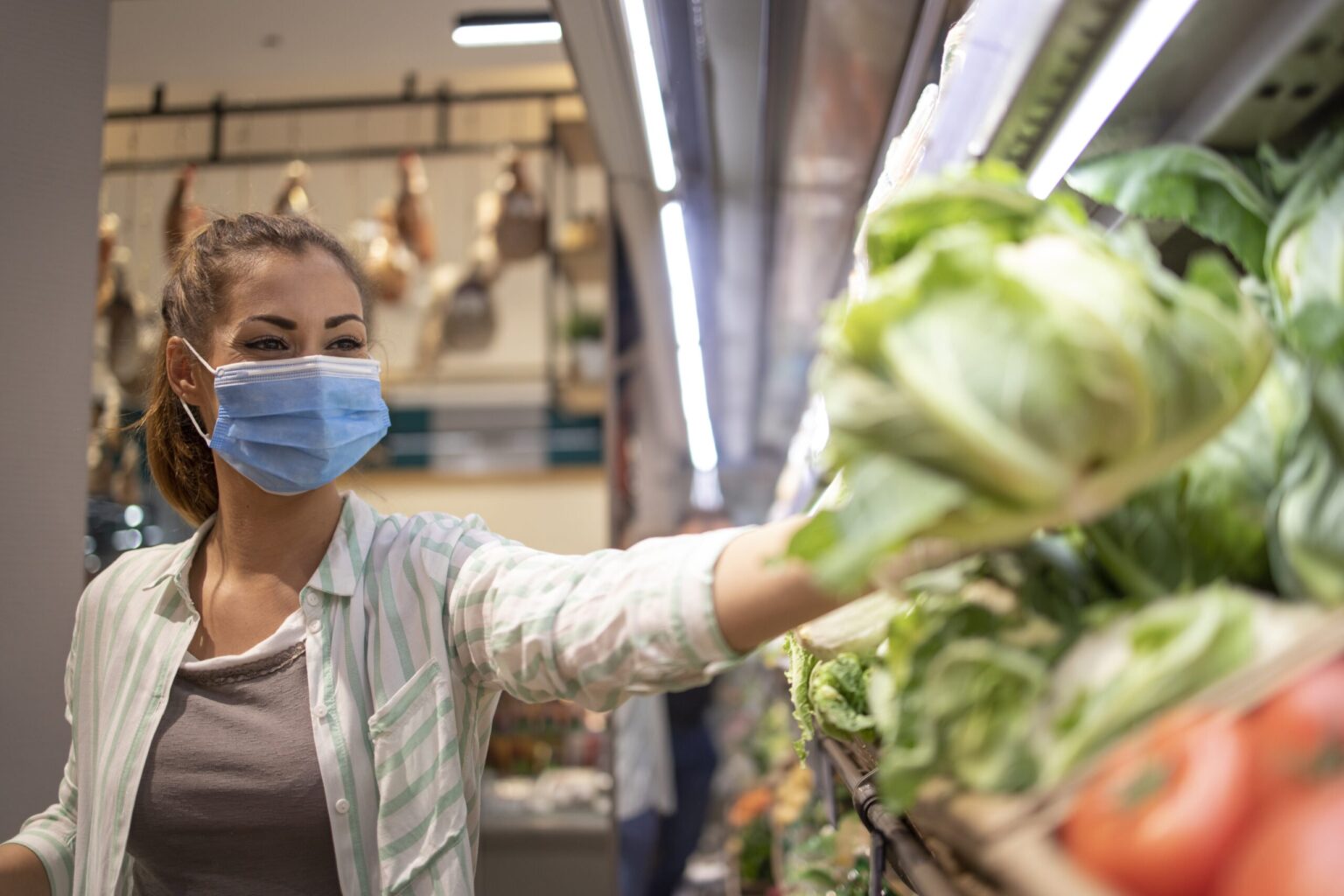Did you know that food safety is one of the most important pillars of the food industry? It is a complex set of practices and regulations that ensure that food reaches your table free from contaminants and safe for consumption.
From the selection of raw materials to the production and distribution process, each stage is rigorously monitored to ensure quality and food safety. For anyone interested in the subject, understanding these processes is essential to promoting healthy and safe food. Want to know more about how the industry guarantees food safety and the main regulations that ensure this quality? Read on and find out everything you need to know!
What is the definition of food safety?
Food safety refers to the set of practices and regulations that aim to ensure that the food consumed is safe and free from contaminants that could cause harm to health. This concept covers all stages of the food chain, from production and processing to distribution and final consumption. In the food industry, food safety is crucial and involves the adoption of rigorous measures to prevent, control and reduce biological, chemical and physical risks.
To ensure food safety, various international norms and standards, such as those established by the Codex Alimentarius and local regulations, such as those of the National Food Safety Agency (ANVISA) in Brazil, are followed. These regulations impose hygiene, quality control, traceability and risk management requirements. For example, systems such as HACCP (Hazard Analysis and Critical Control Points) are widely used to identify and control possible dangers in production processes.
The importance of food safety cannot be underestimated. Contaminated food can cause a range of illnesses, from mild food poisoning to serious outbreaks of food-borne illness, which can be fatal.
How important is food safety?
The importance of food safety is fundamental to guaranteeing the health and well-being of the population. This concept encompasses four main pillars: availability, stability, access and consumption, which together ensure that food is safe from production to the consumer's table.
Availability
Food safety ensures that there is a continuous and adequate supply of safe food. This means that production and distribution processes must be controlled to avoid contamination and ensure that food is always available in good condition. When the availability of safe food is guaranteed, the population has constant access to quality food, preventing food crises and disease outbreaks.
Stability
Stability refers to the ability to maintain the quality and safety of food over time, even in the face of challenges such as climate change, natural disasters or economic variations. Robust food safety systems help protect the supply against these variations, ensuring that food remains safe to eat throughout its shelf life. This includes proper storage, transportation and handling practices that prevent spoilage and contamination.
Access
Access implies that all individuals, regardless of their location or socio-economic situation, can obtain safe and nutritious food. Food security is essential to ensure that geographical, financial or infrastructural barriers do not prevent people from obtaining healthy food. Food security policies and programs, including incentives for local production and equitable distribution, are crucial to improving access to safe food.
Consumption
Finally, the consumption of safe food is the stage where all safety measures converge. Consuming safe food prevents food-borne illnesses, promotes health and improves quality of life. Educating the population about safe food handling and preparation practices is also vital to ensure that the benefits of safe food production are maintained right up to the point of consumption.
Implementing strict food safety practices, adhering to regulations and continuous education are key to ensuring that everyone has access to safe, nutritious and high-quality food.
What is the difference between food safety and food security?
Food security refers to access for all people to sufficient, safe and nutritious food to meet their dietary needs and food preferences. In contrast, food safety refers to the measures taken along the food chain to ensure that food is safe for human consumption, free from contaminants and health risks.
To better understand Food Safety vs:
Food Security: This involves broad issues of access, availability and consumption of food that meets people's nutritional needs. It is about ensuring that everyone has physical and economic access to safe and nutritious food for a healthy life.
Food Safety: Focuses specifically on the practices and regulations adopted from agricultural production to final consumption. It includes measures such as good agricultural practices, quality control, hygiene in food handling, proper storage, safe transportation and government oversight to ensure that food is free of chemical, biological and physical contaminants that could pose health risks.
How can food safety be guaranteed?
Ensuring food safety is not only the responsibility of the food industry, but also a public health concern. By understanding and following these practices, we can contribute to safer, healthier, quality food for everyone:
- Good Hygiene Practices: From production to consumption, it is essential to adopt strict hygiene practices. This includes proper hand washing, using drinking water, sanitizing utensils and equipment, and handling food correctly to avoid contamination.
- Quality Control: Implementing quality control systems throughout the food chain is crucial. This involves constantly monitoring the production, storage and distribution of food, ensuring that acceptable standards are maintained at all stages.
- Proper Storage: Food must be stored under suitable temperature and humidity conditions to preserve its quality and safety. This includes adequate refrigeration for perishable foods and dry storage for non-perishable foods.
- Safe transportation: During transportation, food must be protected from contamination and physical damage. Vehicles and containers must be cleaned regularly and follow established safety standards.
- Education and Training: Training everyone involved in the food chain, from farmers to food handlers and consumers, in safe food handling and preparation practices is essential. This helps minimize the risk of foodborne illness.
- Regulation and Enforcement: Governments and regulatory agencies play a crucial role in drafting and implementing food safety regulations. Regular inspections ensure compliance with established standards and the protection of public health.
Causes of food insecurity: challenges and threats
Food insecurity can be caused by a series of challenges and threats, which affect the quality and safety of the food available for consumption. Some of the main causes include:
Bad Handling and Storage Practices: Improper use of temperatures, inadequate hygiene and improper storage of food can facilitate microbiological and physical contamination.
Complex Supply Chain: Long global supply chains can increase the risk of contamination and food fraud, especially when there is a lack of transparency and control throughout the process.
Deficiencies in Regulation and Enforcement: Failures in the implementation and enforcement of food regulations can allow fraudulent practices and the presence of contaminants in food.
Globalization and Climate Change: The globalization of food trade and climate change can impact food security, increasing exposure to new risks and challenges.
Ensuring food safety requires a joint effort by governments, the food industry, consumers and regulatory organizations. It is essential to invest in safe production practices, strict quality controls, food education and continuous monitoring to mitigate the risks associated with food insecurity. Awareness and knowledge are key to protecting public health and promoting safe and nutritious food for all.
Get to know Prodiet
At Prodiet, food safety is not just a commitment, but a core value that guides all our operations. We firmly believe that food quality and safety are fundamental to promoting a healthy and happy life for everyone. We are dedicated to reducing risks in our processes, rigorously monitoring all stages of production and complying with all regulatory standards and customer requirements.
Our commitment to continuous improvement and sustainable growth reflects our desire to nurture the future responsibly. We invite you to get to know Prodiet better and join us on this journey to promote health and well-being through safe, high-quality food for all stages of life.

BIBLIOGRAPHICAL REFERENCES
MINISTÉRIO DA SAÚDE. 07/06: Segurança dos Alimentos, responsabilidade de todos! Dia Mundial da Segurança dos Alimentos. 2020. Disponível em: <http://bvsms.saude.gov.br/ultimas-noticias/3205-07-6-seguranca-dos-alimentos-responsabilidade-de-todos-dia-mundial-da-seguranca-dos-alimentos>. Acesso em: 15 de jul de 2024.
FUNDAÇÃO OSWALDO CRUZ (FIOCRUZ). Segurança alimentar no contexto da vigilância sanitária: reflexões e práticas. 2014. Disponível em: <http://www.epsjv.fiocruz.br/sites/default/files/seguranca_alimentar_vigilancia_0.pdf>. Acesso em: 15 de jul. de 2024.
CODEX ALIMENTARIUS. Principles and Guidelines for the Application of Microbiological Risk Assessment. CAC/GL 30-1999. Preliminary text adopted by the 23rd Session of the Codex Alimentarius Commission. ALINORM 99/13A, Appendix II. Accessed on: July 15, 2024.






